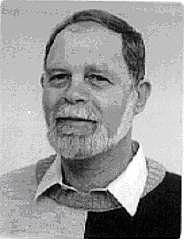
The notion of norms in translation was introduced by an
Israeli translatologist, the late Gideon Toury, in the 1970s. The term refers
to regularities of translation behaviour within a specific sociocultural
situation. In 1990, by way of thanking him for his early support of the natural
translation hypothesis, I sent him a short article for publication in his
journal Target asserting that there are also norms in interpreting (see Sources below). Today
nobody would doubt that there are such norms, and they are among the things
translation students have to learn. However, natural translators may not be
aware of them. For instance, they may not be aware that according to present-day
norms nothing they invent themselves should be added to a translation.
Among the norms there is one whose raison d’être I understand
but which I find irksome. It’s the norm that stipulates that the translator
must only deliver one translation to the reader-lisener. I don’t know a term for this,
so I’ll call it translation singularity. It’s irksome because, as all translators know in their head or heart, there’s almost always more than one possible
translation, whether it be for a single word or for a whole book. But translations
that list alternatives are not acceptable. For example, for French Bonjour! an interpreter may say Good morning! or Good day! but not Good morning or good day! Why not? This
norm perhaps derives from another one, which is that a translation should read or
sound like an original; and we don’t permit such dithering in our original speech.
If we did, it would take more time to decode what we hear or read, and moreover
it would displace part of the translation process from the translator to the
reader-listener. We want the translator to decide for us. In the above simple
example the additional burden would be minimal, but not so in a whole text.
In the early days of machine translation, faced with the
impossibility of the system deciding correctly which of two translations to use,
some programmers did in fact list both. So Bonjour! would translate as:
Good morning!
day!
But the solution never
caught on, and today’s programmers never even think of it.
True, there are as always some exceptions. However, when some
scholarly consideration makes it imperative to give the alternatives another norm
intervenes and requires that they be put in a footnote.
Now here’s an example that’s more advanced because it
involves a difference of meaning and of knowledge beyond the linguistic meaning. It’s an example that occurred in a machine
translation demonstration back in 1970.
Let the source sentence be John met his father at the airport, and let’s translate it into French. There are at least two possibilities: John a rencontré son père à l’aéroport and John a accueilli son père à l’aéroport. The difference between them is that rencontré implies the meeting may have been by chance, whereas accueilli implies that it was intentional. A human translator who knows the circumstances can choose between them; but MT systems are not endowed with that kind of information and so their output should logically be: John a rencontré ou acceueilli son père… At this point, however, singularity intervenes, and the result is that all the MT software I’ve tried it on renders it as either one or the other.
Singularity isn’t the only norm that I find irksome. For
instance, why should a text for bilingual speaker-readers be composed in only
one of their languages? Why shouldn’t Canadians emphasize cultural unity by
singing in a combination of languages? (The original lyrics were in French, so
the English is a translation of sorts.) There actually are bilingual versions, something
like
O Canada!Terre de nos aïeux!True patriot love in all of us command.Car ton bras sait porter l’épée,Il sait porter la croix!...
but anybody who sang them would be regarded as cranky.
However, I digress. Here’s a more relevant question.
Let’s take as hypothesis that natural translators are
unaware of the singularity norm. Do they in fact breach it and include
alternatives more frequently than native and expert translators? It may be
easier to see this with interpreters, who are less severely constrained than the translators of writings.
Another norm that natural translators probably breach more
often is the one that prohibits adding to or omitting from the translation. But
how often, and what factors does it depend on?
Gideon
Toury. Wikipedia, 2019.
Brian Harris. Norms in Interpretation. Target vol. 2, no. 1,
January 1990.
Image
Gideon Toury 1942-2016. Source: Wikipedia.
